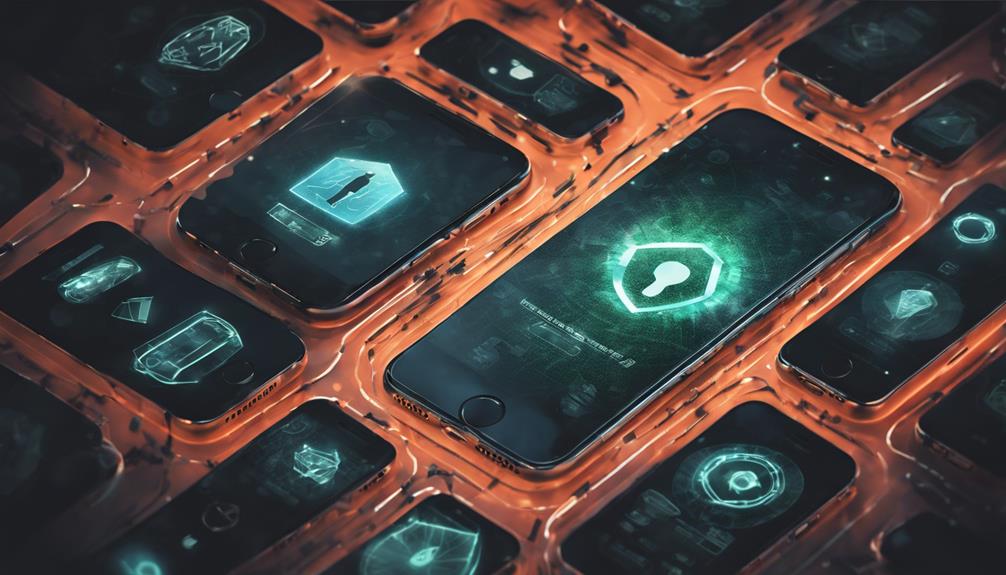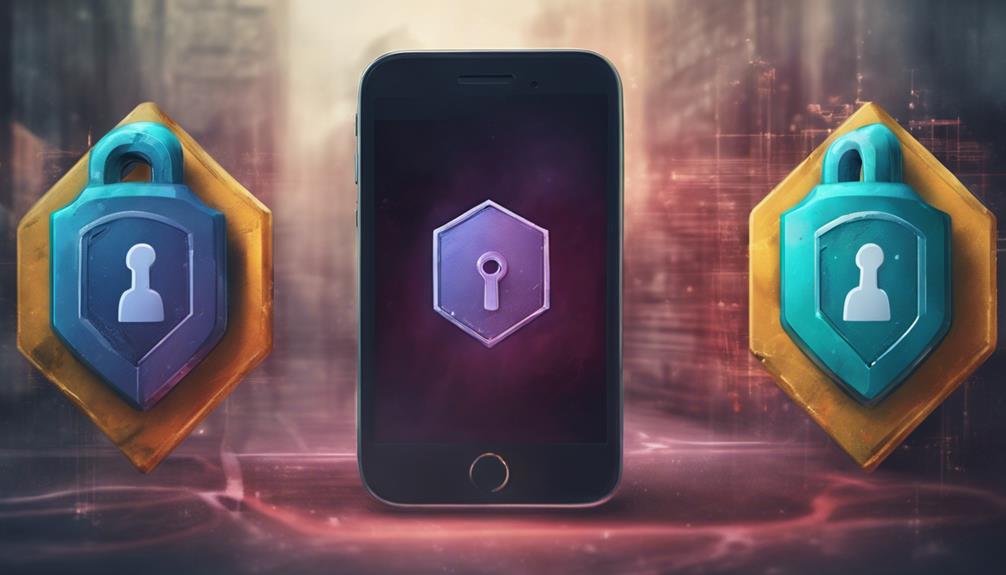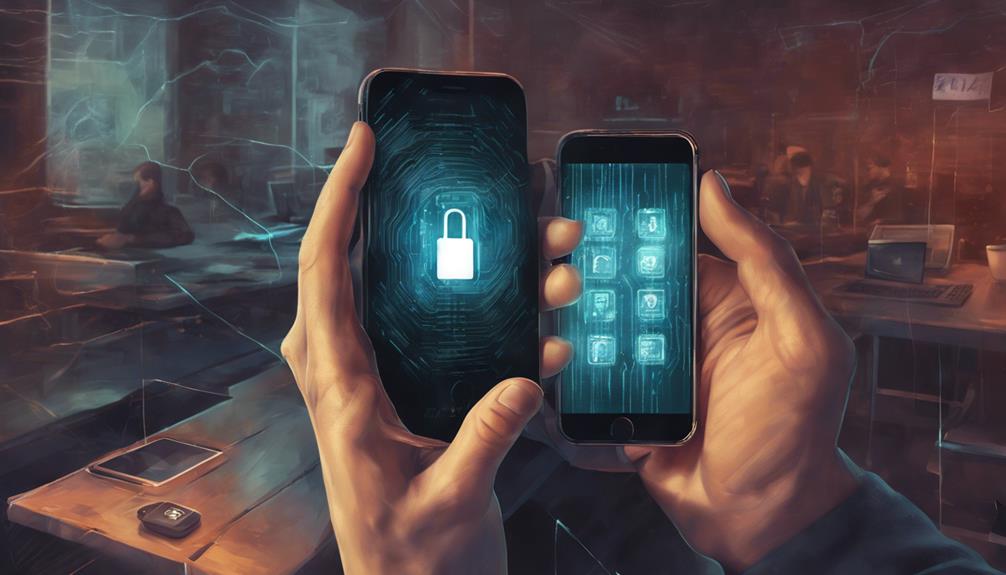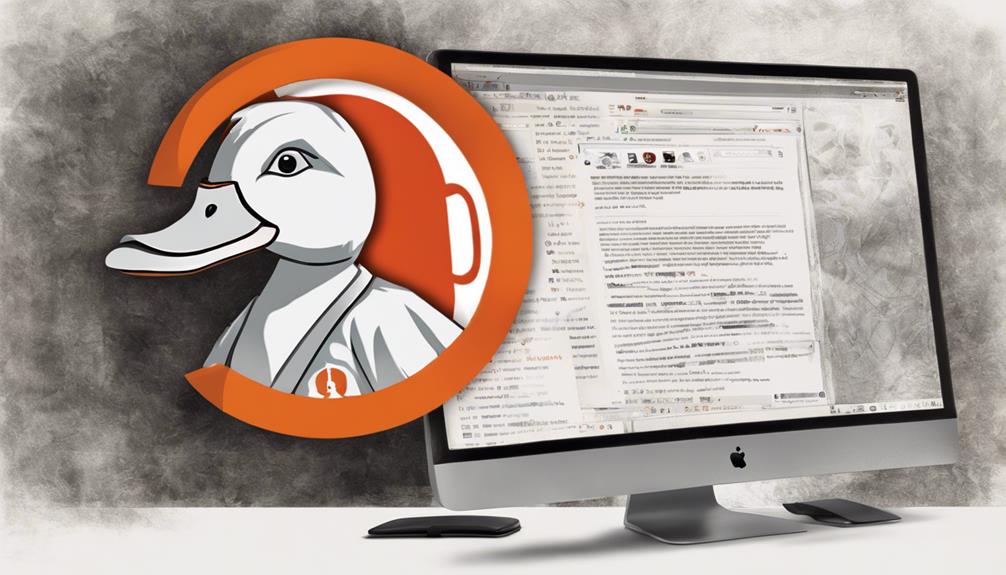The safety of an iPhone from hackers is highly important due to Apple's stringent security measures. These include hardware-based encryption, regular updates, multi-factor authentication, and advanced security features like Face ID and Touch ID. To enhance security, users can enable VPN protection, ad blocking, and device tracking features. Immediate actions should be taken if an iPhone is hacked, such as changing passwords, removing suspicious apps, and contacting Apple Support. Additionally, regular iOS updates are essential to patch vulnerabilities and maintain strong security. Implementing two-factor authentication adds an extra layer of protection. Implement these measures for robust iPhone security.
Key Takeaways
- Hardware encryption, regular updates, and multi-factor authentication enhance iPhone security.
- Utilize Apple security features like Face ID and Touch ID for added protection.
- Implement device encryption, secure passwords, and antivirus apps for robust defense.
- Utilize VPN, ad blocking, and device tracking features to minimize hacking risks.
- Promptly report hacks to Apple for investigation and resolution to safeguard personal data.
Iphone Security Vulnerabilities
One key aspect to take into account when evaluating the security of iPhones is the presence of security vulnerabilities within the iOS system. Despite Apple's implementation of hardware-based encryption for enhanced device protection, vulnerabilities in iOS have been exploited by hackers in the past. This highlights the ongoing challenge of maintaining iPhone security in the face of evolving threats.
While Apple exercises control over the App Store to mitigate risks, the existence of security vulnerabilities underscores the need for constant vigilance and regular security updates. Apple's provision of regular security patches and updates is important in addressing known vulnerabilities, yet the potential for malicious apps to infiltrate iPhones emphasizes the significance of continuous security measures.
Even though iPhones are generally considered secure devices, they are not impervious to hacking attempts. Users must remain cautious and stay informed about potential security risks to safeguard their devices effectively.
Common Hacking Methods for Iphones

Common hacking methods for iPhones include:
- Clicking on malicious links leading to malware installation.
- Downloading infected apps, particularly on jailbroken devices, which heightens the risk of hacking.
- Using weak passwords that are susceptible to brute force attacks.
Additionally, hackers may:
- Target specific iOS versions with known vulnerabilities for exploitation.
- Take advantage of unsecured public Wi-Fi networks to launch hacking attempts.
Iphone Security Vulnerabilities
Hackers exploit various methods to target iPhone security vulnerabilities, including clicking malicious links and downloading infected apps. These vulnerabilities can leave iPhones susceptible to cyber attacks, compromising user data and privacy. To better understand the risks involved, consider the following points:
- iOS Version Targeting: Hackers often focus on specific iOS versions known to have vulnerabilities, taking advantage of security loopholes to infiltrate iPhones.
- Jailbroken Device Risks: While jailbreaking can offer customization options, it also exposes iPhones to increased security risks, making them more susceptible to hacking attempts.
- Public Wi-Fi Threats: Connecting to unsecured public Wi-Fi networks poses a significant risk to iPhone security, as hackers can intercept data transmissions and gain unauthorized access to the device.
To safeguard iPhones from potential security breaches, users must be vigilant in their online activities, regularly update their devices with the latest security patches, and avoid risky behaviors such as downloading apps from unverified sources or clicking on suspicious links.
Protection Against Hacking
To fortify the security of iPhones and mitigate the risks posed by various hacking methods, users must adopt proactive measures to safeguard their devices and personal information. Common hacking methods for iPhones include exploiting iOS vulnerabilities, using weak passwords, and connecting to public Wi-Fi networks. The table below outlines these vulnerabilities and the protective measures users can take:
| Hacking Method | Description | Protection Measures |
|---|---|---|
| iOS Vulnerabilities | Hackers target known weaknesses in iOS versions to gain unauthorized access. | Regularly update iOS and apps to patch security vulnerabilities. |
| Weak Passwords | Using simple or common passwords makes it easier for hackers to breach accounts. | Create strong, unique passwords and enable two-factor authentication. |
| Public Wi-Fi Networks | Hackers can intercept data transmitted over unsecured public Wi-Fi connections. | Avoid connecting to unsecured networks and use VPNs for added security. |
Signs of a Hacked Iphone

Indications of a compromised iPhone can manifest through various noticeable changes in the device's behavior and performance. When suspecting a hack, watch out for the following signs:
- Unfamiliar Apps: The sudden appearance of apps you didn't download is a red flag. These could be malicious software installed by hackers to gain access to your data.
- Abnormal Data Usage: A significant increase in data usage without changes in your usage patterns could indicate unauthorized activities on your device. Hackers may be using your phone to transmit data without your knowledge.
- Strange Messages: If your contacts receive odd messages from your number that you didn't send, it's a strong indicator of a compromised iPhone. This could signify that hackers have gained control over your device and are using it to send out spam or phishing messages.
Actions to Take If Hacked

In the event of a suspected hack on your iPhone, it is essential to promptly implement key actions to mitigate potential risks and secure your device.
Firstly, change all your passwords immediately to prevent further unauthorized access to sensitive information.
Next, remove any unfamiliar apps or software that you did not install, as these could be malicious apps used by hackers to gain control of your device.
Contacting Apple Support is vital in such situations, as they can provide guidance and assistance in securing your compromised device effectively.
Additionally, monitor your Apple ID and linked credit cards closely for any suspicious activities or unauthorized transactions, as these could indicate ongoing unauthorized access.
Consider running a malware scan and using reputable antivirus software to detect and remove any malicious software that may have been installed on your iPhone without your knowledge.
Taking these proactive steps can help safeguard your device and personal data from further harm.
Strengthening Iphone Security Measures

Enhancing the security of your iPhone involves implementing proactive measures to fortify its defenses against potential hacking threats. To strengthen iPhone security, consider the following:
- Enable Multi-Factor Authentication: Utilizing multi-factor authentication adds an extra layer of security beyond just a password. By requiring two or more forms of verification, such as a password and a fingerprint, you greatly reduce the risk of unauthorized access.
- Stay Updated with iOS Updates: Apple regularly releases updates for iOS to address security vulnerabilities and enhance overall device protection. Keeping your iPhone up to date with the latest software ensures that you have the most recent security patches installed, minimizing the chances of exploitation by hackers.
- Leverage Apple Security Features: Take advantage of Apple's security features like Face ID, Touch ID, and device encryption to safeguard your personal data. These built-in measures offer additional protection against unauthorized access and data breaches. By actively utilizing these tools, you can fortify your iPhone's security defenses against potential threats.
Best Antivirus Apps for Iphones

For enhanced security measures on iPhones, considering the use of top antivirus apps is essential. Antivirus software plays a vital role in safeguarding iOS devices from malware, viruses, and phishing attacks.
Among the leading antivirus apps for iPhones are Norton Mobile Security, Kaspersky Mobile Antivirus, and TotalAV Antivirus. These applications offer real-time protection and essential features like safe browsing, anti-theft tools, and data breach monitoring to enhance security on iOS operating systems.
Furthermore, these antivirus apps provide regular updates to combat evolving cyber threats effectively, ensuring that users have the latest protection against potential risks.
In addition to malware defense, users can benefit from added security measures such as VPN protection, ad blocking, and device tracking. By utilizing these antivirus apps, iPhone users can strengthen their device's security and minimize the risk of falling victim to malicious activities in the digital domain.
Importance of Regular Ios Updates

Regular updates for iOS are essential in maintaining the security integrity of iPhones and safeguarding against potential hacking threats. Staying current with iOS updates is vital for users to protect their devices from security vulnerabilities exploited by hackers.
Here are three key reasons why regular iOS updates are vital:
- Patch Security Vulnerabilities: iOS updates are designed to address known security issues present in the operating system. By promptly installing updates, users can prevent hackers from exploiting these vulnerabilities to access sensitive information on their iPhones.
- Enhance Security Measures: Apple releases updates not only to fix existing security flaws but also to enhance overall security measures on iOS devices. These updates add layers of protection against evolving hacking attempts, ensuring a more secure user experience.
- Mitigate Hacking Risks: Delaying iOS updates increases the risk of falling victim to hacking attempts. Hackers actively target devices running older iOS versions, taking advantage of known vulnerabilities that have not been patched through updates. Regularly updating iOS reduces the likelihood of being compromised by such attacks, keeping iPhones secure from potential threats.
Two-Factor Authentication for Iphones

Two-factor authentication for iPhones offers enhanced security features by adding an extra layer of protection against unauthorized access.
This additional step, such as receiving a code on a trusted device, helps safeguard your Apple ID and iCloud account even if your password is compromised.
Enhanced Security Features
Adding an additional layer of security to iPhones, the enhanced security feature known as two-factor authentication requires users to verify their identity using a secondary method. This feature serves as a robust defense mechanism against potential hackers, as it necessitates an extra step beyond just entering a password.
To enable this heightened security measure, users can navigate to their Apple ID settings, where they can easily set up two-factor authentication for added protection. Once activated, the process typically involves receiving a unique verification code on a trusted device or phone number, which the user must input during login to confirm their identity.
Protection Against Unauthorized Access
With the increasing prevalence of online security threats, safeguarding personal information on iPhones has become paramount, and one effective measure for enhancing protection against unauthorized access is through the implementation of two-factor authentication.
Two-factor authentication adds an extra layer of security by requiring a second form of verification, such as a code sent to your trusted device. This feature greatly reduces the risk of hackers gaining access to your personal data on your iPhone, even if your password is compromised. It is available for Apple IDs and can be easily set up in the Settings app on your iPhone.
Once activated, you will receive a verification code on your trusted device every time you sign in to your Apple ID from a new device or browser. By utilizing two-factor authentication, iPhone users can significantly bolster the security of their devices and protect against unauthorized access to their sensitive information.
Reporting Hacks to Apple

Users are encouraged to promptly report any security concerns or suspected hacks involving their iPhone to Apple through their dedicated security page. Reporting hacks to Apple is vital in combating malicious activity and maintaining the overall security of iOS devices.
Here are three key reasons why reporting hacks to Apple is essential:
- Swift Resolution: By reporting hacks, users enable Apple to investigate and address potential vulnerabilities promptly, leading to faster resolutions to security concerns.
- Ecosystem Protection: Apple takes security reports seriously as they not only safeguard personal data but also protect the broader iOS ecosystem from potential threats that could impact all users.
- Expert Guidance: Users can seek assistance from Apple Support on how to report hacks effectively and receive guidance on securing their devices, ensuring they take the necessary steps to enhance their iPhone's security.
Reporting hacks to Apple is not only a proactive step in safeguarding personal information but also contributes to the collective security of iOS users worldwide.
Frequently Asked Questions
Are Iphones at Risk of Being Hacked?
iPhones, despite security measures, are vulnerable to hacking through methods like phishing and malware. User awareness, safe browsing habits, and regular updates are essential in mitigating risks. Immediate action upon noticing signs of hacking is vital.
How Will I Know if My Iphone Is Hacked?
To determine if your iPhone is hacked, watch for signs like fast battery depletion, unusual device behavior, and unauthorized changes. Monitor your Apple ID for unusual activity. Stay alert for unfamiliar apps, strange messages, and increased data usage.
How Secure Are Apple Iphones?
Apple iPhones offer robust security features like hardware-based encryption and App Store monitoring. However, vulnerabilities exist, making them susceptible to hacking. Users must employ strong passwords, stay vigilant, and exercise caution with app downloads to enhance security.
Can Hackers See You Through Your Iphone?
Hackers cannot see you through your iPhone without your knowledge. However, spyware or malware could potentially compromise your device's camera. Apple implements stringent security measures to prevent unauthorized access. Stay vigilant against suspicious apps or links and regularly update your software to mitigate risks.
Conclusion
To summarize, while iPhones are generally considered secure devices, they are not immune to hacking attempts. It is vital for users to be aware of potential vulnerabilities and take proactive steps to protect their devices.
By implementing strong security measures, staying up to date with software updates, and utilizing antivirus apps, users can greatly reduce their risk of falling victim to hackers. Remember, prevention is key when it comes to safeguarding your personal information and privacy.









